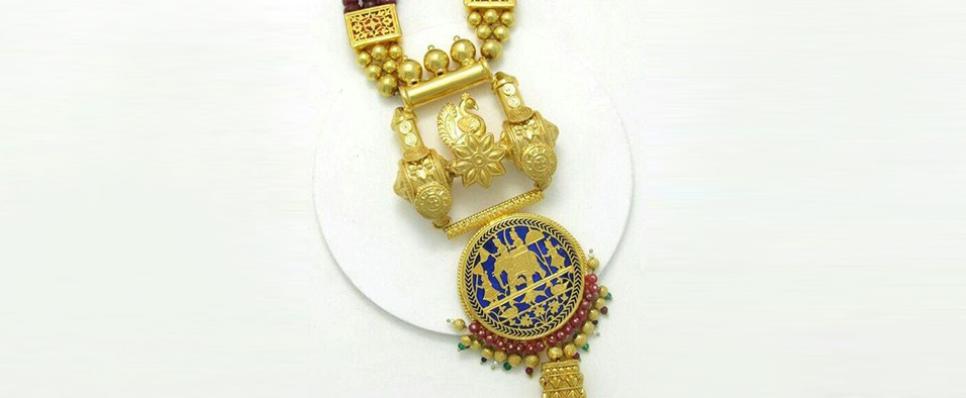Published: 04 Sep 2017
History of Thewa

The history of jewellery in India is tied to its social and cultural context; you can track the history of the nation in the jewellery it produced. Spanning 5000 years, Indian jewellery has been an expression of India’s culture and aesthetic values describing the people, their life and their kingdoms, but engraved and preserved in gold. Various methods of crafting these desirable pieces and mixing of various art forms, helped create exquisite designs patronized not only by the rulers and royal families but by foreigners too. In time, this array of designs inspired by the local culture and lifestyle, spread abroad. It brought fame to the craft and sometimes to the craftsmen who created the exquisite pieces of art.
Thewa as an art can be traced back 400 years to when the rulers of Pratapgarh gave a land grant to the families of the artisans practicing the craft. It is believed that as a form of jewellery-making however, it existed long before that and was practiced by Bengali artisan’s years before but when they were not given the patronage they desired, they moved westward, in search of a benefactor. Their search ended when they finally settled in Rajasthan. They taught some of the locals the peculiar art form and then as they say ’the rest was history’. In time Thewa acquired the status of a family business and was protected fiercely by its practitioners. Women were never taught it because they would be married-off into other families and would thus know the art-form, only to share it with their in-laws!
Like many traditions and art forms that withered away due to lack of care and benevolent sponsors, Thewa also saw a decline with time, until the modern era, when Indian designers took it upon themselves to revive the magnificent art to its former glory. One name that’s often mentioned in the same breath as Thewa, is that of Roopa Vohra. She started the original revival of the art form in 1990s, leading to its popularity today.
Thewa jewelry is a unique mix of glass and gold. Engraved filigreed gold sheets are fused on glass to create these masterpieces. It requires patient handling and mastering of the technique, as the gold sheets used are of the highest purity. Meticulous and tenacious effort on Roopa’s part has led to Thewa becoming almost a household name today! With designs that range from Mughal courtly scenes, Hindu mythology, floral motifs, historical scenes, animals – deer, elephants, winged fairies and many other picturizations from history, Thewa is one kind of jewellery-making that has given back to India the era of royalty and richness.
It has gained the favour of buyers both old and young, with exquisite neckpieces, earrings, broaches, rings maang tikkas being available in a range of prices from affordable to highly expensive. What has also made Thewa endearing to the modern generation is the array of glorious colors and designs available. When looked at closely, each Thewa piece is the product of an artist pouring his vision onto a canvas, a canvas made of gold.











